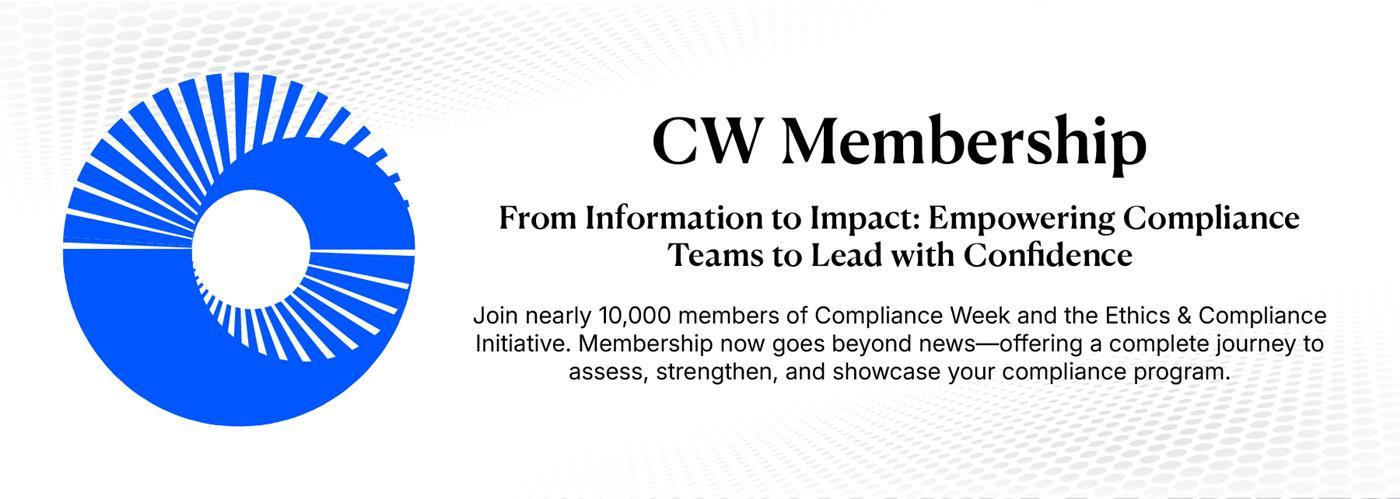- Home
-
News
- Back to parent navigation item
- News
- National Compliance Officer Day 2025
- Accounting & Auditing
- AI
- AML
- Anti-Bribery
- Best Practices
- Boards & Shareholders
- Cryptocurrency and Digital Assets
- Culture
- ESG/Social Responsibility
- Ethics & Culture
- Europe
- Financial Services
- Internal Controls
- Regulatory Enforcement
- Regulatory Policy
- Risk Management
- Sanctions
- Surveys & Benchmarking
- Supply Chain
- Third Party Risk
- Whistleblowers
- Opinion
- Benchmarking
- Certification
- Events
- Research
- Awards
-
CW Connect
- Back to parent navigation item
- CW Connect
- Sign In
- Apply
- Membership
Addressing third-party information security risks in 2017
By Carole Switzer2017-01-24T14:45:00
The latest installment of the GRC Illustrated Series from Compliance Week and OCEG discusses ways to circumvent a cyber-breach via third-party risk management.
THIS IS MEMBERS-ONLY CONTENT
You are not logged in and do not have access to members-only content.
If you are already a registered user or a member, SIGN IN now.
Related articles
-
 Webcast
WebcastCPE Webcast: Hot Topics in Risk and Compliance: AI, Analytics, and Emerging Audit Technologies
2025-12-16T14:00:00Z Provided by Workiva
Join experts from KPMG, Cisco, and Workiva as they explore how audit, accounting, and finance professionals can leverage a technology mix of data analytics, gen AI, and other tools to ramp up efficiency and strengthen control effectiveness.
-
 Opinion
OpinionWhen stability fails: Why over-optimization creates organizational brittleness
2025-11-07T19:21:00Z By Charles Thomas, CW guest columnist
Most organizations would say they value stability. Predictable operations, consistent output, and well-defined processes are generally considered marks of maturity. The assumption is simple: if a system can be made reliable, it becomes resilient.
-
 Article
ArticleNYDFS to firms: apply cybersecurity rules to third-parties
2025-10-22T18:22:00Z By Adrianne Appel
The New York State Department of Financial Services (NYDFS) wants financial firms to step up their game when it comes to third parties and cybersecurity.
- Terms and Conditions
- Privacy Policy
- Do Not Sell My Info
- © 2025 Compliance Week
Site powered by Webvision Cloud






